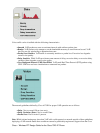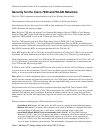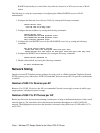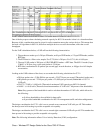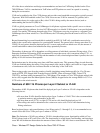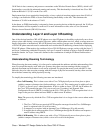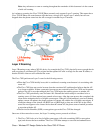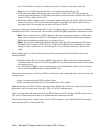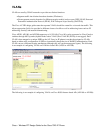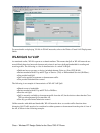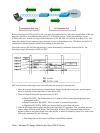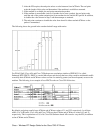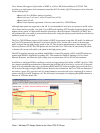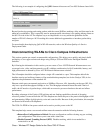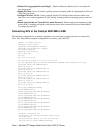
Layer 2 roaming with both static WEP and LEAP has been shown to provide acceptable QoS using either
G.711 or G.729. If LEAP is being used, it is recommended that users are defined locally on the ACS server.
This is because using off−box databases have potentially unknown response times, which could adversely
effect overall QoS during Layer 2 roaming.
Layer 3 Roaming
Layer 3 roaming occurs when a client moves from an AP that covers IP subnet A to an AP that covers IP
subnet B. At this point, the client would no longer have an IP address or default gateway that is valid within
the new IP subnet. Since the clients IP address and default gateway are no longer valid, its existing data
sessions or VoIP calls fail since the remote client can no longer reach the local client.
There are the following ways that clients can work in an environment where they are roaming across Layer 3
boundaries:
Obtain a new IP address or default gateway in the new subnet through DHCP. While this is supported
on some operating systems, it is not an effective model for VoIP since it would break all existing calls
(signaling and media).
•
Mobile IP (MIP) is a mechanism where routers within the network allow end points to keep their
existing IP address or default gateway, and the routers handle rerouting packets to the clients on their
new IP subnet. MIP requires Home Agent and (optionally) Foreign Agent functionality on the routers,
as well as a MIP client on the end points. This functionality is not supported on the Cisco 7920.
•
Proxy MIP (PMIP) provides similar functionality to MIP, except that the end points do not have to have an
embedded MIP client. The MIP client is contained in a network device, such as an AP, and that device acts as
a MIP proxy for the end points that reside behind it. PMIP is currently supported on Cisco APs, but it is
currently not supported for VoIP applications.
The Cisco 7920 does not currently support native Layer 3 roaming using MIP. In addition, the current lack of
VLAN support on the Cisco APs when using PMIP prevents the Cisco 7920s from being deployed for Layer 3
roaming. The use of VLANs to create isolated voice and data traffic is required by Cisco AVVID design
guidelines.
Note: In multistory WLAN deployments where the WLANs on each floor have different subnets, particular
care needs to be taken in the RF site survey to ensure that stations on one floor do not roam to WLANs on
floors above or below.
Cisco − Wireless IPT Design Guide for the Cisco 7920 IP Phone



